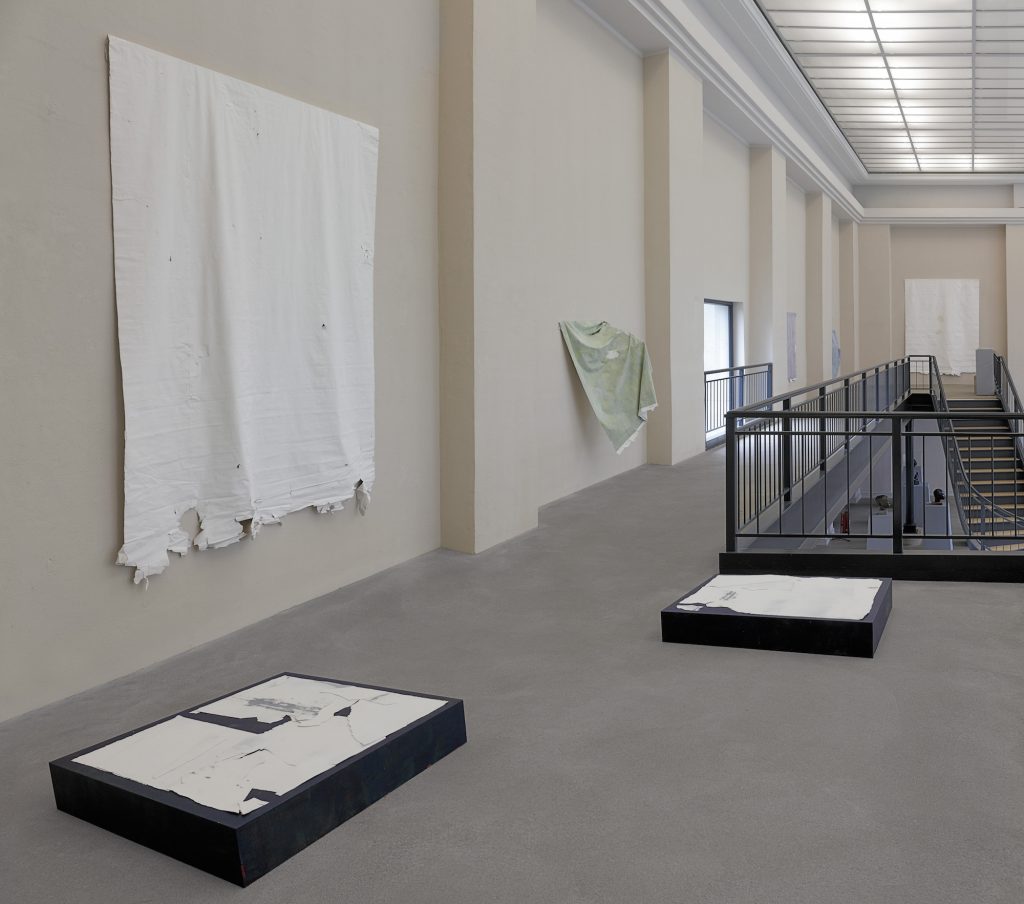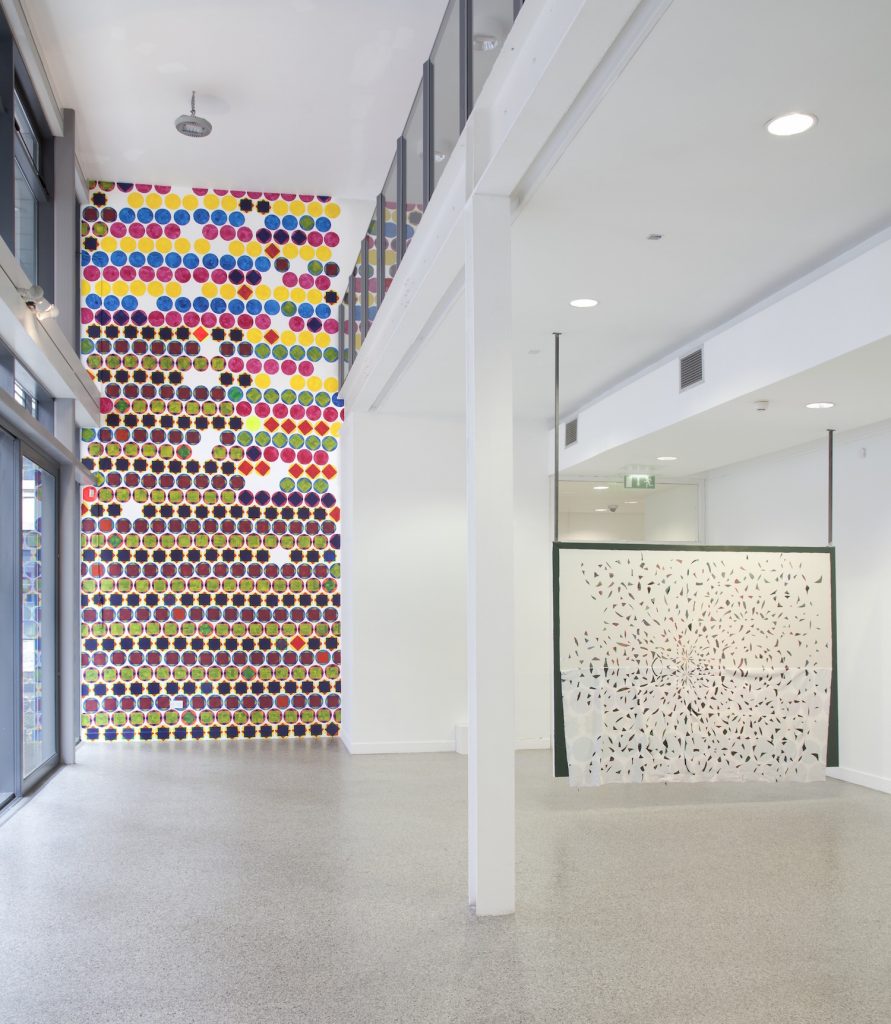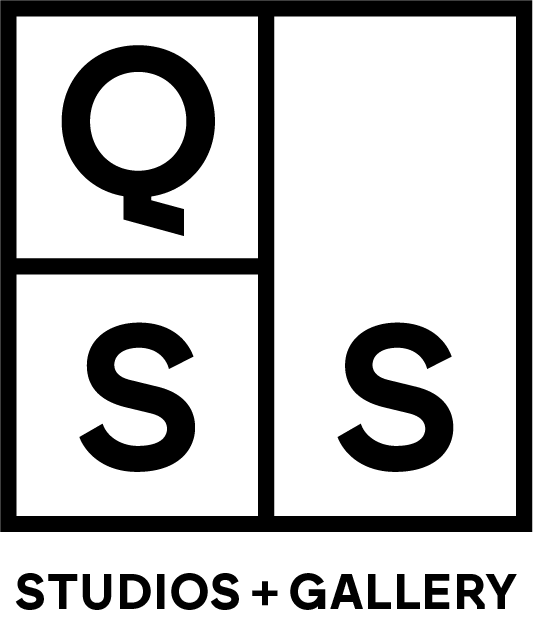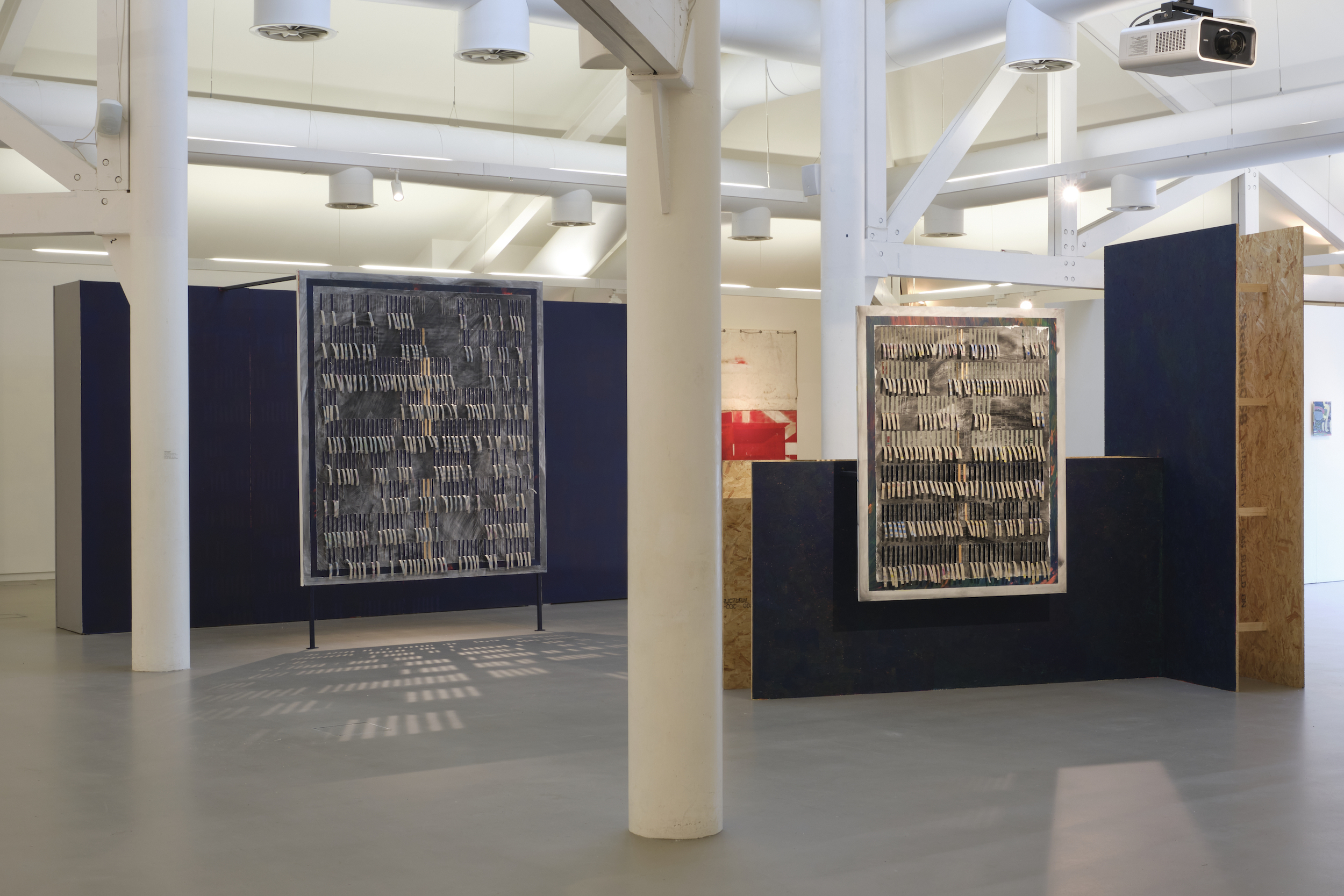What is your typical studio routine?
My studio routine, if I’m honest, is quite sporadic and in recent years my studio activities have tended to be deadline and production driven for exhibitions. I think part of the reason for this is that as well as having my studio at QSS I also have an at home office which allows me to make a clear division and separation between what is studio work and what is office/research work.
When I am in production mode, in the lead up to an exhibition, this is when the importance of having a personal studio becomes most apparent. Until I became a studio member at QSS in 2016, I didn’t have a regular studio since leaving college, regularly finding myself working from the kitchen table or when required sub-letting studios for production purposes.
It is interesting to look back at how I developed my practice this way, but this method of working became increasingly difficult as the scale, ambition, and opportunities within the work developed and trying to sublet a studio when a deadline loomed became too stressful.
What role does social media play in the documentation/promotion of your own work?
Online presence and social media have increasingly become a part of how all of us engage with art and audiences beyond the studio or exhibition and I do this mostly through my website, Instagram account and through recorded talks/lectures and seminars I have been invited to participate and present at.
For example, with my website (www.susanconnolly.com), I use a very basic web-host, Tsohost, to manage my own website, as managing your own website with limited technological expertise is difficult but important. It also comes down to cost, I cannot for example pay a web-designer (as much as I’d like) to upload and change content on my website and it is vital that I can do this myself. Unfortunately, I learned the hard way how important it is to have control of your online self, when in 2010 I was invited to contribute to a Japanese publication to later find out in hardcopy that they had taken some other Susan Connolly’s bio for their information on me!
I am also an active user of Instagram since around 2014 and in the beginning I liked using the platform for its image/visual driven online ethos. At that time, I mostly considered how I was engaging with it as a sort of photography sketchbook where I could collect interesting bits and bobs, a sort of archive of daily sightings. But my relationship to it has also evolved over the years and now I think of it as more a space for testing ideas and images, for seeing how other artists and creative people share content, their own work and very importantly for me it has become a place to sometimes gain feedback from your peers.
There are many arts journals, which would you consult regularly?
So, I actively use online platforms as I said above but I also dip in and out of Twitter and recently back to Facebook. I am not a tweeter, but I do find I come across the most interesting and unexpected art related items and content on this platform. For example, it was on Twitter that I learned of an open submission call for an exhibition called ‘The Trouble with Painting’ which I submitted work for and later exhibited in London in 2014, so it is a great way to come across opportunities that you might not otherwise.
Interestingly, during our current lock-in situation, I have found that as an educator many of my students still really engage with Facebook. I myself had until recently totally disengaged with this platform (too many memes, motivational speeches and all-round drivel) but I have now set up a page for my students where the content is solely ‘art-related’ and it is working out as a great way to share interesting and appropriately focused content, much of which I garner from other platforms.
Some of my most recent posts have included online journals (Apollo Magazine, Art News, Art Net, Elephant Art, Sternberg Press, Brian Pickings, Art forum, Hyperallergic, Frieze Podcasts, Circa Magazine) websites (Painters Talking Painting, Ovid TV, Vimeo) talks and lecturers (Ultraviolet Arts, Isolation Art School, RCA Talks, Louisiana Channel, RHA talks) virtual galleries and exhibitions (Garter Lane Gallery, Lisson Gallery, IMMA, Dia Art, National Gallery of Ireland) to name just a few.
About the artist
Susan Connolly is a graduate of Limerick School of Art and Design, she holds an MFA from the University of Ulster, a first class honours MA from ACW at the National College of Art and Design (NCAD), Dublin and her PhD was awarded from Ulster University having been awarded the VC Scholarship.
Recent exhibitions include solo shows at Kunsthaus Dalhem, Berlin (2020); Platform Arts, Belfast (2018); The Lab, Dublin (2015); dlrLexicon, Dublin (2015); and The MAC, Belfast (2014). Group exhibitions include Penumbra, FE McWilliam Gallery, Banbridge (2020); Paint-ing, Draiocht, Dublin (2019); After an Act, The Golden Thread Gallery, Belfast (2018); Peripheries 2017, Gorey School of Art (2017); Veins, The Molesworth Gallery, Dublin (2016); What Is, and What Might be, Highlanes Gallery, Drogehda (2015); ArtBox, Dublin (2014); The Trouble with Painting, The Pumphouse Gallery, London (2014); Essays for the House of Memory, Ormston House (2013), Limerick; Three Degrees of Painting, Solstice Arts Centre, Navan (2013).
Recent awards include; Culture Ireland Funding (2019); Arts Funding, Kildare County Council (2019); The Golden Foundation, New York (2017); WARP artist residency, Belgium (2010); Arts Council of Ireland, Travel and Training Award (2009); DCR Guesthouse Residency, Den Haag, Holland (2009).


Image details:
Image 1: Over+over&over – installation image the FE McWilliam Gallery, Banbridge; Acrylic paint, medium gel, steel, sterling board; various dimensions; 2019/2020; Photo credit: Simon Mills.
Image 2: Wandering Things – installation image Kunsthaus Dalhem, Berlin; Acrylic paint skins and wooden armatures and plinths; Various dimensions; 2020, Photo credit: Gunter Lepkowski.
Image 3: When the Ceiling Meets the Floor –installation image the Lab Gallery, Dublin; Acrylic paint, medium gel, steel; 2015; Photo credit: Davey Moor.
You can view Susan Connolly’s profile page here.
The full list of questions to choose from is given below:
1. What is your typical studio routine?
2. Was there a definitive point in your life that you decided to become a professional artist?
3. Many of us at QSS have previously studied at Ulster University at different stages of our education (BA, MFA, PhD). How did this experience influence your later attitude as a professional working artist?
4. Socially, historically and perhaps geographically, Belfast has many ‘unique’ attributes that define it as a city. Can you describe one positive and one negative aspect of working in this ‘unique’ place.
5. There are many arts journals, which would you consult regularly?
6. What role does social media play in the documentation/promotion of your own work?
7. Is there a difference, say, in being called an ‘artist’ or a ‘painter’/’sculptor’, ‘printmakers’? Do these distinctions matter?
8. How do you find an audience beyond the studio?
9. Have you completed any artist residencies or are there any you aspire to?
10. Can you name some of the contemporary artists you are interested in?

